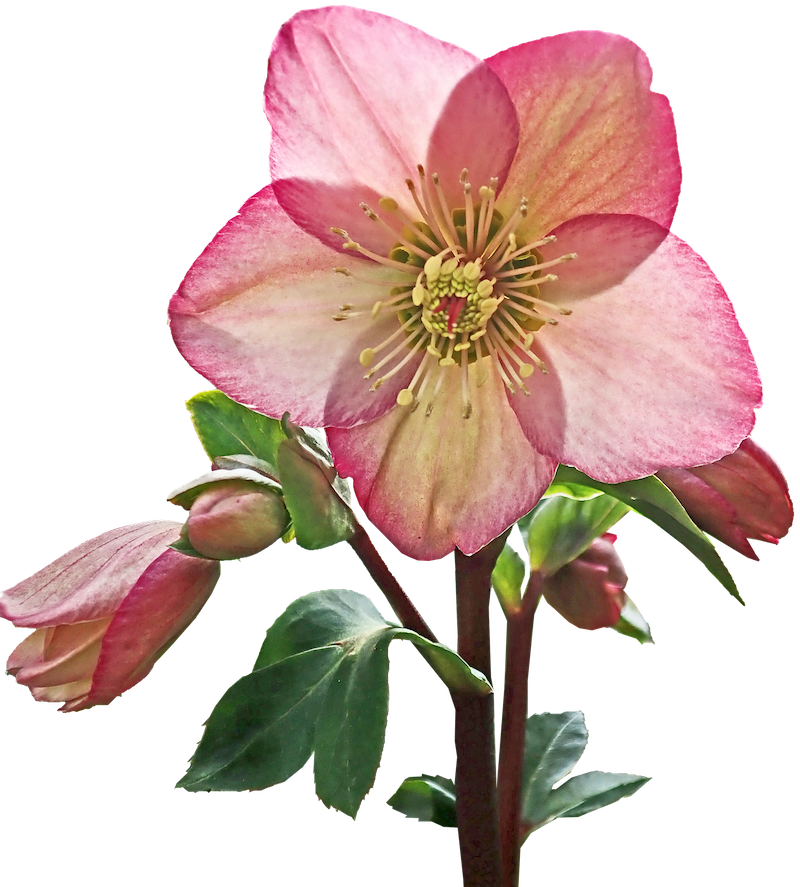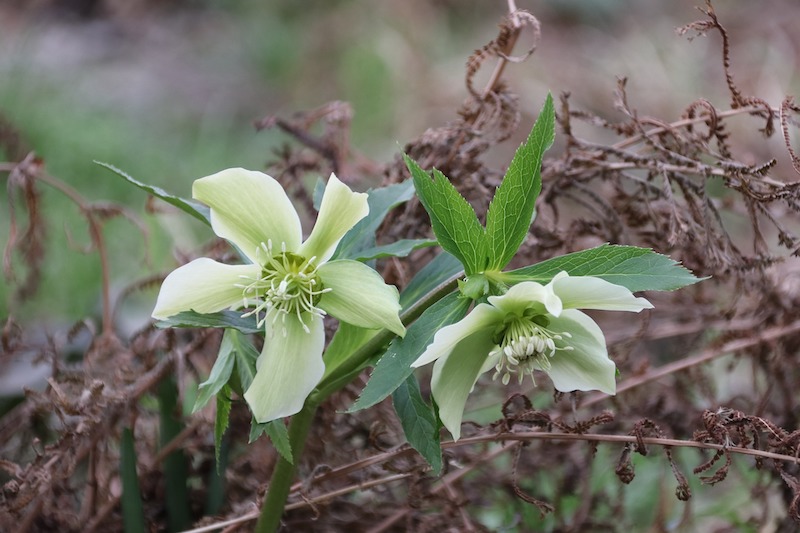Hellebores are evergreen in most of their growing range. Some of the foliage will become tattered during the winter months and should be trimmed off to make room for new foliage. There are two schools of thought on the timing: prune in early winter before blooming or prune in late winter to early spring before new foliage emerges. The choice is up to you and depends mainly on aesthetic preferences.

When to Prune Hellebore
Hellebore can be pruned from early winter until early spring. Some gardeners prefer to cut back the old foliage around Christmas time, to avoid inadvertently removing the forthcoming blooms. In addition, the leaves may look tattered by early winter from insect damage, wind, or disease.
Hellebore is evergreen and can provide winter color to your garden when the ground is not snow covered. If the foliage still looks fresh, you can wait until early spring to prune it. Just be careful not to cut any flower buds or flower stems by mistake.
How to Prune Hellebore
Step 1 - Inspect plants for dead, damaged, or diseased leaves.
Decide which leaves need to be removed.
Step 2 - Remove old foliage at the base.
Use hand pruners to carefully remove old, tattered leaves. Cut off the entire leaf stem. Be careful not to trim off any emerging buds or flower stalks by mistake.
Step 3 - Dispose of old foliage.
Make sure to clean up the old foliage to prevent the spread of disease to other plants or new foliage.
Pruning Hellebore at Other Times
There is no need to trim healthy hellebore stems during the growing season. Allow the evergreen foliage to remain intact during the winter months unless it is broken or unsightly. Hellebore doesn't require deadheading the spent flowers during the summer months. The showy parts of the flower are actually sepals and remain attractive for months. The seed heads are also ornamental and will allow self-seeding. Hellebore volunteers are usually a welcome sight in the garden.

Why Do You Prune Hellebore?
Prune hellebore to remove dead, damaged, or diseased leaves. Removing unsightly foliage will allow the late winter blossoms to stand out in your garden. It also prevents diseases from overwintering on old foliage.
Hellebore Pruning Tips
- When pruning, be careful not to accidentally trim away flower buds or stems.
- Remove dead or diseased foliage at any time of the year.
- Don’t remove the hellebore’s evergreen leaves in autumn.
- Cut back tattered leaves from early winter to early spring.
 |
Author Maureen Farmer - Published 07-04-2022 |
